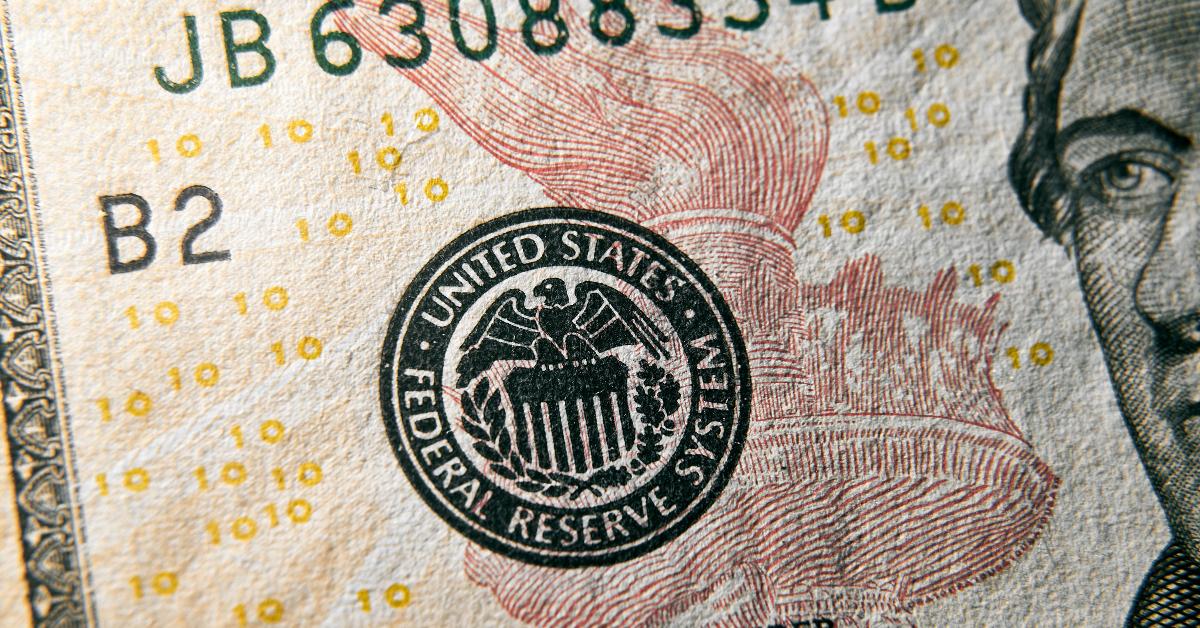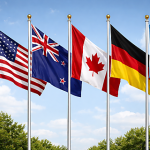
But once a commodity is established as a money on the market, no more money at all is needed.
—Murray Rothbard, Taking Money Back
The Fed’s distinguishing characteristic is its grant of privilege to buy assets with money it doesn’t have. No other person or institution can legally do this; those that tried would be indicted for counterfeiting.
At the very least you might think this would raise eyebrows, but it doesn’t except in fringe quarters. It is simply part of modern monetary gospel, never to be examined too closely.
Another part of the gospel is fractional reserve banking, wherein commercial banks create multiple claims to the same dollar through their lending activities. (See Alan Greenspan’s implicit endorsement of fractional reserve banking in his famous defense of gold.)
Furthermore, the assets the Fed purchases are usually a form of government debt, with collateral secured by government’s power to shake down American taxpayers. Thus given a green light for its Green New Deal, wars, and other travesties, government has gone wild with deficit spending, which for 2023 stands at $1,613,421,672,350 as of August 27.
In his 1961 farewell address, President Dwight D. Eisenhower famously warned the country about the military-industrial complex, but we know how that turned out. John F. Kennedy wanted to smash the Central Intelligence Agency (CIA) into a thousand pieces, and for that and his peace overtures to the Soviets, the CIA had him murdered.
The CIA, the military, and the never-ending list of other government agencies and programs require funding. Massive funding. Perpetual funding. The government can only wring so much out of taxpayers through legal extortion; for the rest, they depend on the corrupt banking system and its legally protected counterfeiting racket.
It’s a racket that fattens some while it depletes the wealth of the rest. But once upon a time the scene was far different. Money was honest to the extent paper substitutes were fully redeemable in gold and government was small. Americans at all levels prospered, and the country was at peace.
To Those in Charge, the Culprit Was Honest Money
Then a predictable banking panic arrived in 1907.
The Panic of 1907 is especially significant because it led to government-directed banking “reform.” Knickerbocker Trust of New York had invested heavily in United Copper, and when the latter’s stock price collapsed, Knickerbocker depositors engaged in a frenzy of withdrawals. The run on Knickerbocker triggered bank runs across the city and eventually the nation. In desperation, the government turned to the powerful John Pierpont Morgan to save the economy.
As Ron Chernow tells us in The House of Morgan:
The 1907 panic was Pierpont’s last hurrah. Although semiretired, reporting to work periodically for only an hour or two, he suddenly functioned as America’s central bank. Within two weeks’ time, he saved several trust companies and a leading brokerage house, bailed out New York City, and rescued the Stock Exchange.
All this he did along with other bankers during late October 1907. The panic died shortly after.
For New York bankers there remained a much more serious problem. The growth of state banks over the previous twenty years had slowly eroded their power. By 1896, state and other nonnational banks constituted 61 percent of total banks, and by 1913, 71 percent. More significantly, nonnationals commanded 57 percent of banking resources by 1913.
With such a troubling trend, certain New York bankers and a senator from Rhode Island decided in 1910 to go on a now-famous duck hunting trip at Morgan’s estate on Jekyll Island, Georgia. The ducks, of course, were not the web-footed kind but credulous Americans who would later believe that the money trust had been tamed and panics were now history.
The hunters developed a plan for a central bank, but for political reasons it took until December 23, 1913, to get the Federal Reserve Act signed into law. The act created twelve regional reserve banks ruled by a board of Washington bureaucrats, including the Treasury secretary and presidential appointees. Though the reserve banks are officially “private” institutions, they’re little different than government agencies.
Most of us must produce something of value to get money. Not so with government unless we count its wars and economic disasters. With the Fed issuing notes that are legal tender, originally redeemable in gold but stripped of that backing for American citizens since 1933, the government and its central-bank partner were in business.
Their product was money itself.
Funding World War I
Surely, they had a product forever in high demand, and the partnership soon found eager buyers after the government’s catastrophic decision to enter World War I on April 6, 1917.
The partnership was headed by one man, Treasury secretary William Gibbs McAdoo, and his job was to determine how to finance Wilson’s delusion of a world made safe for democracy. Refusing to print money directly, which he knew would lower morale and hurt the reputation of the Fed’s new paper, McAdoo settled on a combination of tax increases and what he called Liberty Bonds, which were technically bearer bonds. One-third of the financing would come from taxes, the rest from bond sales.
The idea was to pick the pockets of the hapless public and spend it on the war. Taxation of course was mandatory and on an aggressive schedule that topped out at 77 percent for millionaires. Anything more aggressive ran unacceptable risks. Selling bonds to a public opposed to the war required ingenuity and a massive propaganda effort.
The newly established propaganda ministry, the Committee on Public Information, was up to the task. As detailed in the Federal Reserve’s history of Liberty Bonds:
The first [Liberty Loan] drive in May 1917 used 11,000 billboards and streetcar ads in 3,200 cities, all donated. During the second drive, 60,000 women were recruited to sell bonds. This volunteer army stationed women at factory gates to distribute seven million fliers on Liberty Day. The mail-order houses of Montgomery Ward and Sears-Roebuck mailed two million information sheets to farm women. “Enthusiastic” librarians inserted four-and-one-half million Liberty Loan reminder cards in public library books in 1,500 libraries. Celebrities were recruited. Charlie Chaplin, Mary Pickford, and Douglas Fairbanks, certainly among the most famous personalities in America, toured the country holding bond rallies attended by thousands.
The committee also used techniques that stimulated common motives:
The competitive (which city would buy the most bonds), the familial (“My daddy bought a bond. Did yours?”), guilt (“If you can’t enlist, invest”), fear (“Keep German bombs out of your home”), revenge (“Swat the Brutes with Liberty Bonds”), social image (“Where is your Liberty Bond button?”), gregariousness (“Now! All together”), the impulse to follow the leader (President Wilson and Secretary McAdoo), herd instincts, maternal instincts, and—yes—sex.
It has a certain modern ring to it, doesn’t it?
Of the $17 billion ($4.42 trillion in 2023 dollars) raised by the war’s end, $8.8 billion came from taxes, the rest from Liberty Bonds. According to a government survey conducted in 1918–1919, roughly 68 percent of urban wage earners owned Liberty Bonds. Hats off to the propaganda campaign.
The Payoff
What did the country receive for its $17 billion? War casualties amounted to 117,000 killed and over 200,000 wounded. What was their return on investment? Or to their devastated families? None died or suffered wounds in defense of American liberty, much less “democracy.” Most were conscripts. Nor were the ones who declared war the same men who were shipped overseas to fight it. In the words of Progressive Wisconsin senator Robert M. La Follette, addressing Congress on April 4, 1917, two days before Congress declared war on Germany, “The poor would be the ones called upon to rot in the trenches, have no organized power, have no press to voice their will upon this question of peace or war.”
Funny how that works out.
Two-time medal of honor recipient Major General Smedley D. Butler offers this perspective:
Beautiful ideals were painted for our boys who were sent out to die. The was the “war to end wars.” This was the “war to make the world safe for democracy.” No one told them that dollars and cents were the real reason. No one mentioned to them, as they marched away, that their going and their dying would mean huge war profits. No one told these American soldiers that they might be shot down by bullets made by their own brothers here.
The war set the stage for World War II, the Holocaust, the birth of the national security state, and weapons of mass destruction. It led to an explosion in government size and meddling, the Cold War, overseas “sport” wars, and debt at all levels as the driving force of the economy. Americans became uncritical serfs in their allegiance to the state and to a bewildering monetary system they had little interest in understanding.
Rothbard was certainly correct saying no more money is needed once a commodity money is freely established. But the government and its henchmen at the Fed found that far too restrictive. With the commodity removed, their partnership has taken the country—and the world—to the edge of extinction.







